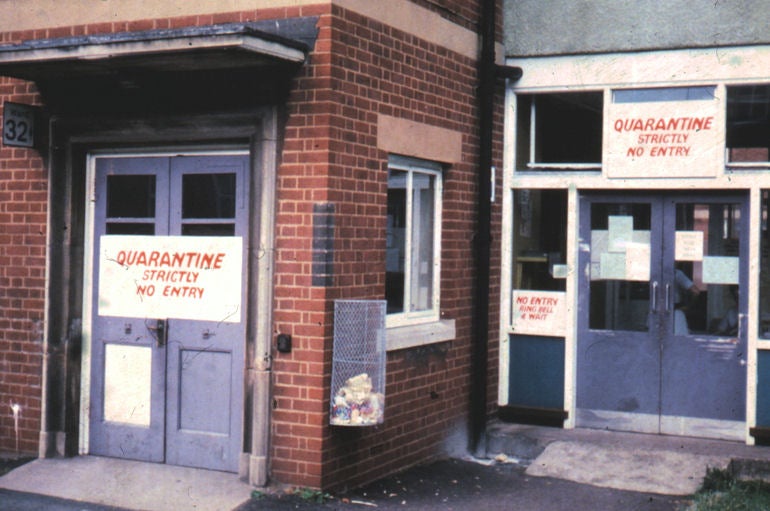The tragic case of smallpox’s final victim
Listen Photo via Graham Colm/Creative Commons)" title="infectious_diseases_ward_at_east_brimingham_hospital_1978" width="1" height="1"/>
Photo via Graham Colm/Creative Commons)" title="infectious_diseases_ward_at_east_brimingham_hospital_1978" width="1" height="1"/>
This is the exterior of the ward at East Birmingham Hospital where Janet Parker was admitted. Photo via Graham Colm/Creative Commons)
Medical photographer Janet Parker was the last person to die of smallpox, and the circumstances of her death underlined the insidious nature of the disease.
On September 11, 1978, one of the most infamous diseases in human history claimed its final victim. Her name was Janet Parker, and her death sent shockwaves through the international medical community.
Parker, a 40-year-old British medical photographer, had been employed at the University of Birmingham and assigned a darkroom located above a laboratory in the university’s medical school overseen by Henry Bedson, an infectious disease expert conducting research into smallpox.
By the late 1970s, smallpox was on the verge of extinction. Two decades earlier, the World Health Organization (WHO) had launched a mass vaccination campaign aimed at eradicating the disease once and for all. Former hotspots in Brazil, Indonesia, and India were all declared disease-free by 1973, and Bangladesh and East Africa were quick to follow.
Unfortunately for Bedson, the success of this campaign meant that smallpox research was no longer a WHO priority. He received word that his laboratory would be shut down at the end of 1978. Confronted with a ticking clock, Bedson rushed ahead with his experiments, despite warnings from a WHO inspection team that his facilities were outdated and potentially unsafe.
In the end, Janet Parker paid the price for Bedson’s negligence. On July 25, 1978, Parker was ordering photographic supplies in an office next to her darkroom, which was connected via an air duct to the lab where Bedson stored his virus samples. Sometime during the course of that day, she was infected with smallpox.
A few weeks later, Parker checked herself into a nearby hospital to deal with a persistent fever and unexplained rash. The doctors suspected she might have chickenpox but soon changed their diagnosis. Almost immediately, emergency procedures went into effect. Doctors put Parker into isolation and quarantined nearly 500 people who had come in contact with her.
Among those asked to remain in their homes was an increasingly distraught Henry Bedson, who soon realized his role in the Birmingham smallpox outbreak. Devastated by the suffering his carelessness had caused, on September 1, 1978 Bedson went into his garden shed and slit his own throat. In a suicide note, he apologized for having “misplaced the trust which so many of my friends and colleagues have placed in me and my work.”
Janet Parker died ten days later. The tragic circumstances surrounding her death inspired questions about the safety standards in biological laboratories as well as the future status of any remaining smallpox samples. Most nations chose either to destroy their remaining supplies of the virus or ship them to the Centers for Disease Control in Atlanta. In May 1980, the WHO proudly announced that “smallpox is dead.” Janet Parker was both the virus’s final victim and an important reminder that this public health victory came at a terrible cost.
WHYY is your source for fact-based, in-depth journalism and information. As a nonprofit organization, we rely on financial support from readers like you. Please give today.



